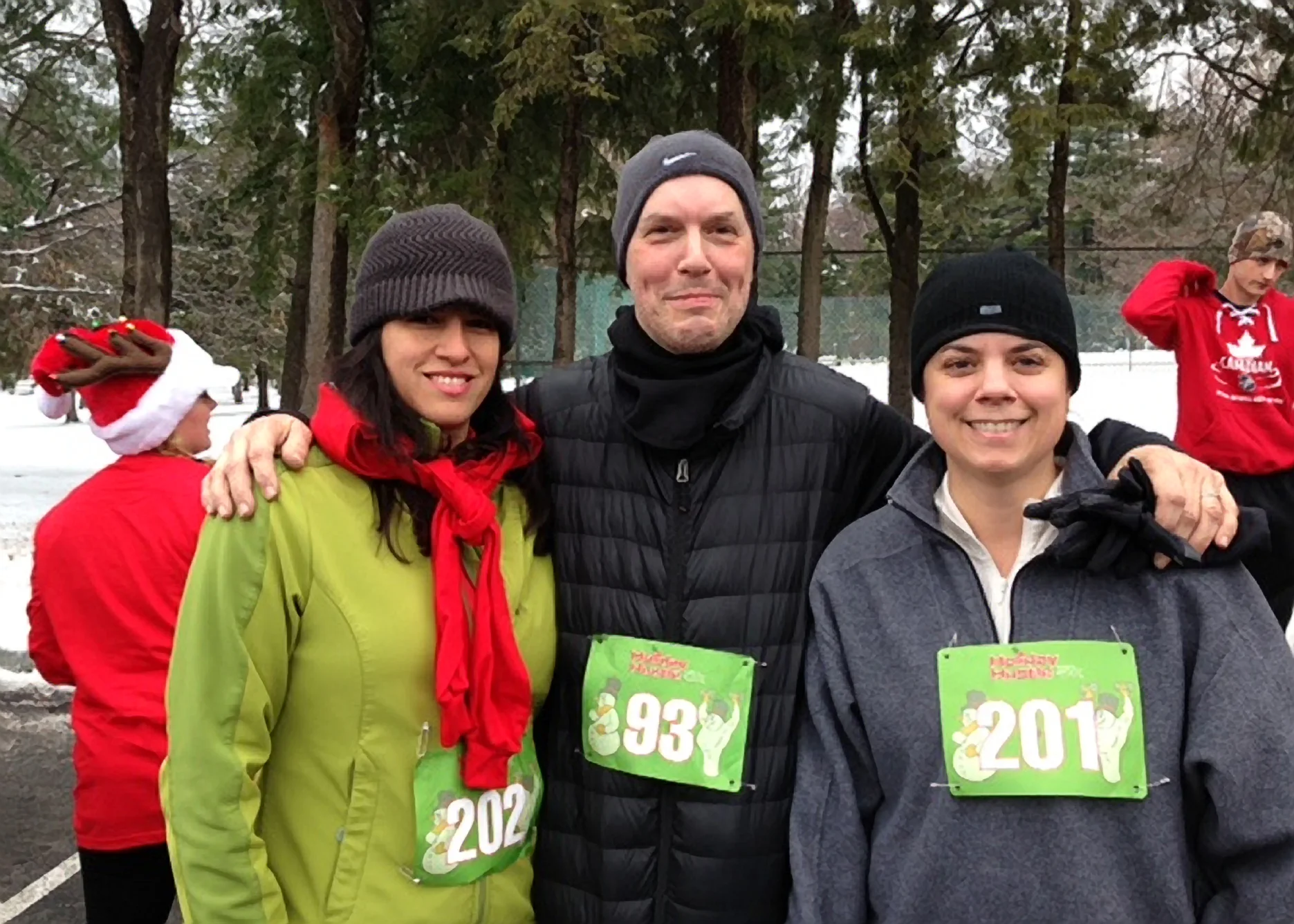Running by the River
John Hudak
15 December 2013 at Holiday Hussle , Dobbs Ferry, Judy Hull, John Hudak, and Sonya Terjanian
Living in the Rivertowns, we are lucky to have a State Park, the twenty-six mile long Old Croton Aqueduct, running right through our villages. The trail is mostly flat, shaded by trees, and frequently affording wonderful views of the Hudson River and the Palisades Cliffs. Many runners, including myself, cherish the ability to run in nature, unhindered by cars and their fumes. Maybe you do, too; maybe you’ve longed to; maybe you tried to, but had pain, an injury, or just got out of breath too fast.
Do you remember in your childhood when you ran just for the pure joy of running? You ran with your whole being, feeling your muscles working in synchronization, your arms, legs, and heart working together for the sole purpose of moving you forward. When we age, our bodies get used to spending hours at a time in the same positions; and as a consequence, our heads and shoulders curve forward and the muscles in our lower bodies are tightened and shortened, causing us to move in unbalanced ways; and when we run, gravity causes our feet to meet the earth with a force equal to three times our body weight. If you aren’t running with proper form and technique, you will subject your joints and muscles to repetitive stress, leading to injury.
Many people start out with the idea that they must run as fast and as long as they can in order to gain the benefits of running, but after getting winded, out of breath, or finding themselves with sore or strained muscles, they stop running altogether, saying “I guess this isn’t for me.” People who start running programs for weight reduction, stress relief, or general health reasons need to start off slowly, working to build up an aerobic and muscular base in order to eventually get to the point where they can enjoy themselves running and experience it as being fun.
Before anyone starts one of my running classes, they have a general fitness assessment to see where their joints might be out of alignment or holding tension, and what muscles need to be stretched or strengthened in order to run without injury. I start my classes with dynamic warm-ups, moving and stretching our muscles to avoid straining muscles that are too tight, getting joints in motion and starting to move more blood through the body.
We spend the bulk of class time outside running. At first, we run on a track, because it is easier and safer to concentrate on form than when running on a trail, where you also have to look out for holes, rocks, tree roots and other debris. After a while, part or all of class time is spent on the aqueduct. During class, I observe and correct running styles so I can later recommend exercises that help runners achieve and maintain good running form. Posture tends to be the easiest problematic thing to correct: people often lean too forward, bend their heads down, or hunch over forward, compressing the chest and lessening the amount of the air in each breath . Opening up the chest and breathing deeply are the first things I emphasize.
I like learning about and using modern approaches to running that take advantage of research in exercise physiology. One of the techniques I stress is running at a steady cadence (bpm, or beats per minute—or, in running, footfalls per minute). Running with a quick, steady cadence, causes a runner to take shorter strides, eliminating over-striding, the common cause of Achilles tendonitis, shin splints, knee pain, or worse. Eventually, runners can speed up their pace by slowly building muscle strength and lengthening their stride.
Every class ends with a series of cool-down stretches and recommended strengthening exercises that can be done at home after every run. I suggest running or some other form of aerobic activity at least twice between weekly classes. With the benefit of proper exercises and stretching, attention to form and technique, even the least athletic person can become a runner—and even run for the fun of it.
Presently, I have a class every Sunday at 9:30am, and will be adding a Saturday morning class in early Spring (April 2014). All classes start at the gym where I work as a Certified Personal Trainer: Hero, 62 Main Street, Dobbs Ferry, NY 10522. You can contact me via the contact link (the small envelope) at the top of this webpage.



